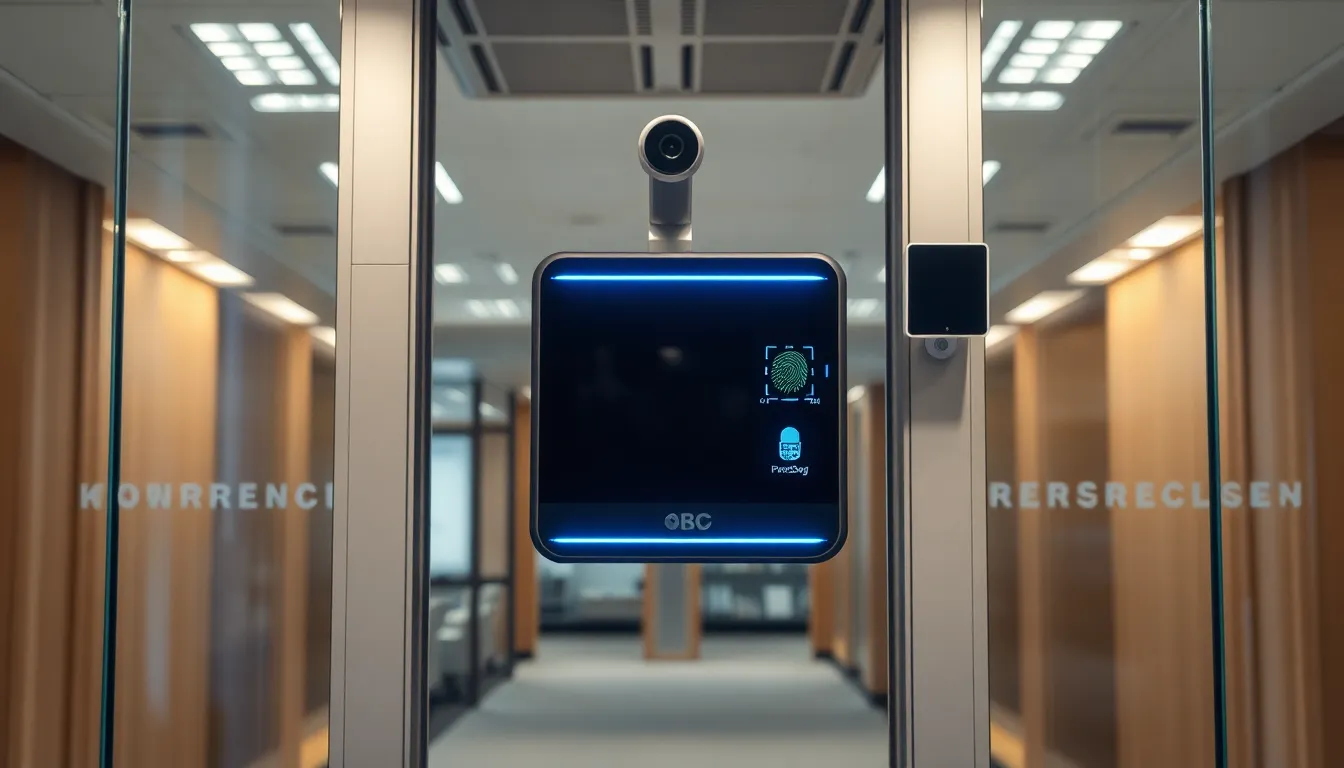In a world where forgetting your password can lead to a mini existential crisis, biometric technology swoops in like a superhero. Imagine unlocking your phone with just a glance or a fingerprint, leaving those pesky passwords in the dust. As biometric advancements continue to evolve, they’re not just changing how we access our devices; they’re redefining security itself.
Table of Contents
ToggleRecent Advances in Biometric Technology
Recent breakthroughs in biometric technology continue to enhance security measures and provide seamless access solutions. Notable innovations in facial recognition and fingerprint scanning are shaping this rapidly evolving field.
Facial Recognition Innovations
Advancements in facial recognition algorithms improve accuracy and speed. Systems now achieve recognition rates exceeding 99% under various lighting conditions. These algorithms utilize deep learning to analyze complex facial features, making identification quicker and more reliable. In addition, enhanced privacy features protect user data, allowing for trustworthy applications across different platforms, such as mobile devices and security cameras. Various industries adopt these innovative systems, improving access control in airports and secure facilities.
Fingerprint Scanning Developments
Fingerprint scanning technology sees significant enhancements in both speed and accuracy. Modern scanners reduce authentication time to just a second or less, ensuring a smooth user experience. New sensors now detect fingerprint patterns even through moisture or dirt, increasing accessibility. Integration of fingerprint scanning technology into wearable devices also expands its applications, allowing for secure payments and personal data protection. Adoption continues to grow in industries striving for improved security measures, ensuring user data protection across multiple functions.
Industry Applications of Biometric Technology
Biometric technology finds extensive applications across various industries. Significant advancements in security and surveillance enhance safety measures while improving user convenience.
Security and Surveillance
Biometric identification plays a crucial role in enhancing security protocols. Organizations now utilize fingerprint and facial recognition systems for access control to sensitive areas. Security agencies increasingly rely on facial recognition to monitor public spaces and identify potential threats efficiently. The deployment of biometric systems in airports and border control has expedited identity verification processes, minimizing human error and fraudulent activities. Maintaining data privacy continues to be a priority as regulations evolve around the use of biometric data in surveillance.
Healthcare Solutions
Biometric technology provides innovative solutions in the healthcare sector. Patient identification through biometrics ensures accuracy in record-keeping and reduces the risk of medical errors. Hospitals adopt fingerprint scanning to streamline patient check-ins and verify identities during medication administration. Remote patient monitoring systems incorporate biometrics for secure access to personal health information. The growing emphasis on data protection aligns with stringent regulations aimed at safeguarding patient privacy while leveraging biometric innovations for improved care delivery.
Regulatory and Ethical Considerations
Biometric technology raises significant regulatory and ethical issues as its adoption increases across various sectors. Privacy matters play a central role in discussions around biometric data usage.
Privacy Concerns
Concerns about privacy arise frequently with biometric data gathering. Individuals often express unease about how their facial images or fingerprints are stored and potentially misused. Companies must implement strong encryption methods to protect this sensitive information. Public opinion frequently highlights the risk of unauthorized access to biometric databases. Stakeholders in various industries should prioritize user consent and transparency, ensuring that customers understand how their data is utilized. Clear policies surrounding data retention limits can help alleviate fears while fostering trust among users.
Compliance Standards
Compliance with regulations is critical in the deployment of biometric systems. Organizations must adhere to frameworks such as the General Data Protection Regulation (GDPR) and the Health Insurance Portability and Accountability Act (HIPAA). Industries utilizing biometric technology should familiarize themselves with specific legal requirements governing data protection and management. Ongoing auditing of biometric systems ensures alignment with these standards. Legal repercussions can arise from non-compliance, including hefty fines and reputational damage. Regular training for staff about ethical data handling practices is essential for fostering a compliant culture.
Future Trends in Biometric Technology
Biometric technology continues evolving rapidly, driven by innovations that enhance security and user convenience.
AI and Machine Learning Integration
AI and machine learning significantly improve biometric systems. Enhanced algorithms allow for real-time processing, making facial recognition faster and more accurate. These technologies adapt to various environmental conditions and user behaviors, increasing reliability. Organizations implementing AI can reduce errors and enhance fraud detection in biometric applications. Continuous learning from vast datasets enables systems to evolve, leading to superior recognition capabilities. As a result, businesses adopt these advanced solutions to secure sensitive information effectively.
Emerging Biometrics
Emerging biometrics broaden the scope of identification methods. Voice, iris, and vein recognition technologies illustrate innovation in this field. Voice recognition systems analyze unique vocal attributes, providing an audio-based security option. Iris recognition utilizes intricate patterns in the eye for precise identification, proving valuable in high-security scenarios. Additionally, vein recognition analyzes the complex pattern of veins in the hand or finger, offering a non-intrusive authentication method. Industries are likely to adopt these advancements to enhance overall security measures while diversifying access solutions.
Conclusion
Biometric technology is rapidly reshaping the landscape of security and access solutions. With advancements in facial recognition and fingerprint scanning, users can expect faster and more reliable authentication methods. The increasing integration of these technologies across various sectors highlights their significance in enhancing safety and efficiency.
As organizations navigate the challenges of privacy and regulation, the focus on ethical data handling practices will remain crucial. The future of biometric technology promises even more innovation with the potential for new identification methods. Staying informed about these developments is essential for anyone interested in the evolving world of security solutions.








